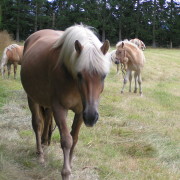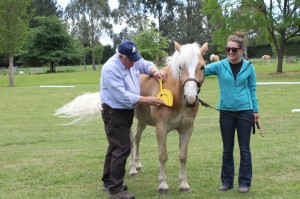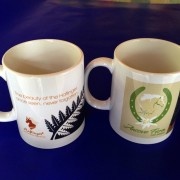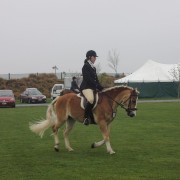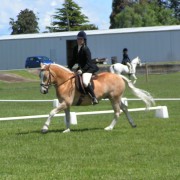PROCEDURE FOR CLASSIFICATION OF HAFLINGER HORSES IN NEW ZEALAND as at March 2013
Contact the Registrar of HHANZ who will arrange the classification
HHANZ regulations are to be followed
Identification
Regulation 9 (b)
Al l horses must be microchipped and DNA recorded before being presented for classification or at the time of classification. Members must forward to the Registrar details of all brands put on horses, microchip number and DNA details. Micro chips shall be inserted in the left neck region. Locations of previous micro chipping if not in this location shall be lodged with the Registrar.
Classification
Regulation 10
- Only Classifiers approved by the Association may classify horses.
- Only horses three years of age and over may be presented. (Calculated from 1st August each year)
- All horses will be scored and graded by the classifiers in accordance with the form marked Appendix 1
- The Association’s standard description is the MINIMUM standard.
e. All horses to be classified must be have a current RAS height certificate or a measure by a vet using a proper Measuring stick/rod complete with spirit level measured on flat concrete or similar surface. The height certificate must be presented at the classification, the height recorded in centimeters by rod measure. Measurements recorded in hands will be converted by the Association. The classifier can measure the horse on the day of the classification providing that a true spirit level measuring rod and correct measuring conditions (i.e. flat ground) are available.
A classified Haflinger can have a final height recorded as measured above at the age of six years in the purebred register. On a veterinary or preferably RAS height certificate in accordance with RAS rules.
f Minimum height for Purebred Haflinger stallions must be 140cms (one hundred and forty centimeters) and Purebred Haflinger Mares must be 135 cm (one hundred and thirty five centimeters). (As from 2020 HHANZ will be following AHHBA and World Haflinger Sports and Breeding Federation and males and females must be 140cms)
g Stallions must score at Class IA to pass classification. which means a minimum score of 80 with no score lower than 5 points on any sub score
h Geldings may be inspected by a local veterinarian using the Certificate as per Appendix II in the Regulations. The Veterinarian should complete and sign the certificate, which is to be forwarded to the Registrar with a clear photograph of the OFF side, the NEAR side and HEAD-ON showing facial markings. There will not be a point score or branding with the Edelweiss for this procedure. The Registrar will forward the photographs and Vet certificate to the Classifier(s) for approval. If acceptable, the horse is deemed to be classified for show purposes. A fee Classification as per the current Fee List is payable. A Gelding accepted as above, may be presented at a future classification day, to be scored and branded. A second fee will be charged for presentation in this case. Geldings do not receive the edelweiss brand, it is for studbook horses only that are in the breeding register. Horses must exhibit a calm quiet temperament and must be able to be closely inspected. Failure in this regard means the horse will be rejected.
i Blemishes, such as wire marks which do not affect the horse’s movement are not detrimental and must NOT be used to withhold classification. Injuries resulting in bad movement should be taken into consideration when judging a horse.
j Application may be made for re-presentation of a horse at any of the Association’s future classification days. The score achieved at the latest re-presentation is the recorded score.
k All written comments concerning scoring at classification days are to be strictly confidential to the owner of the horse, the classifier and the Registrar.
l. All Haflinger horses must be foal registered or otherwise recorded in the stud book
m. Stallions need to be classified by 2 classifiers recognised by HHANZ, one of these can be a video classification at the discretion of the registrar. This is usually granted when geographical isolation is a factor.
n. Video classification should be taken on the same day as classification, preferably at the same time. This video should have no audio.
o. It is important that the horse is videoed continuously standing square on near side, front, off side and back view. This segment should be about 2 minutes long to give the classifier sufficient time to view the horse. Following this a classic triangle workout should be performed with the video taking the position of the person judging the horse. “Tracking” views on the triangle must be included and at the conclusion of the triangle horse stood square. In addition, footage of mane and forelock being moved and close –ups of hooves.
p. Classification should be based on a simple triangle workout: walk away from judge, walk out across the second side of the triangle, turn and walk towards to classifier (a minimum of once). A second triangle workout is also required at a trot. Options to further assessment are to allow the horse to be ridden, worked on a lunge line and/or worked in an enclosed area at liberty. However, while ridden or lunging is an option, owners choosing the traditional workout only, should not be penalised.
q. Decisions of the classifiers at the time of inspection shall be binding. Appeals against any decision must be made to the Executive in writing for their consideration.
r. A photographic record of the horse must be taken on the day of classification to establish a photographic record of the horse at that time for archive records.
Classification fees will be set at every Annual General Meeting. The owner(s) are responsible for this payment to the classifier and the travel costs incurred.

